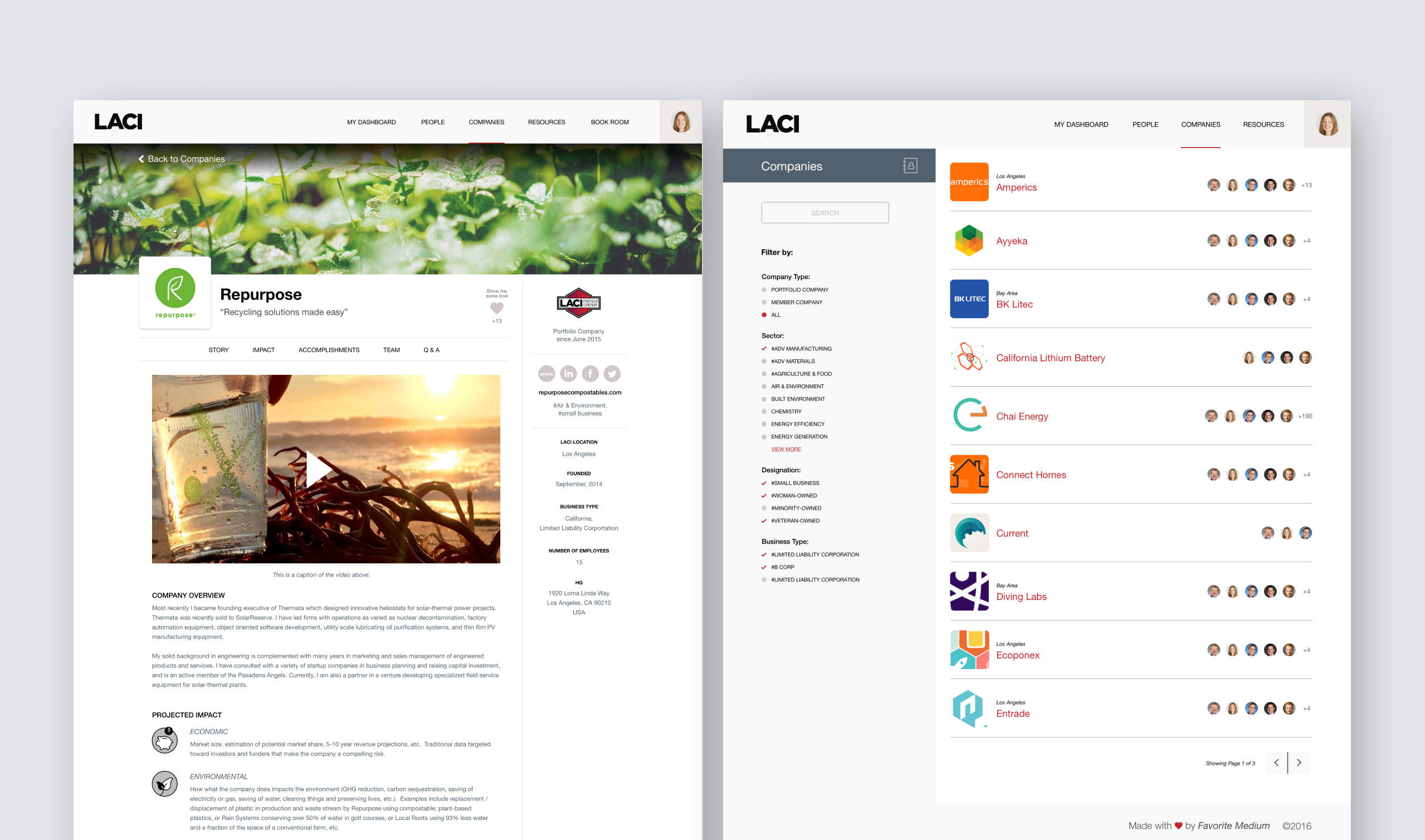

Los Angeles Cleantech Incubator (LACI) was having difficulty managing meeting spaces at their main LA location. None of the existing booking products on the market sufficiently addressed their unique challenges. We conducted user research and ran a design sprint resulting in a set of user-tested wireframes that FM built into a lightweight product called SPACI.
LACI was extremely happy with the design and build of SPACI, so they came back to us with another challenge: design and build a product that would help them manage their growing portfolio of startups across California and the globe. At the time LACI had a portfolio of 35 companies and it was growing rapidly. The organization knew that it would become increasingly difficult to manage their portfolio from an administrative standpoint. They were using an array of different tools like Google Docs and spreadsheets to manage the application process, the onboarding and startup incubation phase, as well as tracking and collecting milestones and metrics. LACI needed a centralized tool to manage and streamline all these processes.
Our task was to design a new portfolio management tool and evolve the existing SPACI product so it would become a product feature within a larger portfolio management system for LACI employees and their portfolio of startups.
My role was to conduct user research, run design workshops to prioritize product goals, iterate on the product roadmap, design prototypes, conduct concept testing and design the site architecture and wireframes. After gaining client approval on the wireframes, I would also work closely with my visual design colleague, as well as our developers to execute on the designs.
At the beginning of the project, I designed interview questions and conducted users research to better understand the existing process for managing companies and learn more about users’ pain points and needs. I also wanted to understand what suite of products users had cobbled together to meet their existing needs and learn what was and wasn’t working about that process.
Since there were several different groups of stakeholders with different needs, I designed specific questions for each group. The various stakeholders included:
Below are the common pain points I heard across the 7 interviews I conducted.
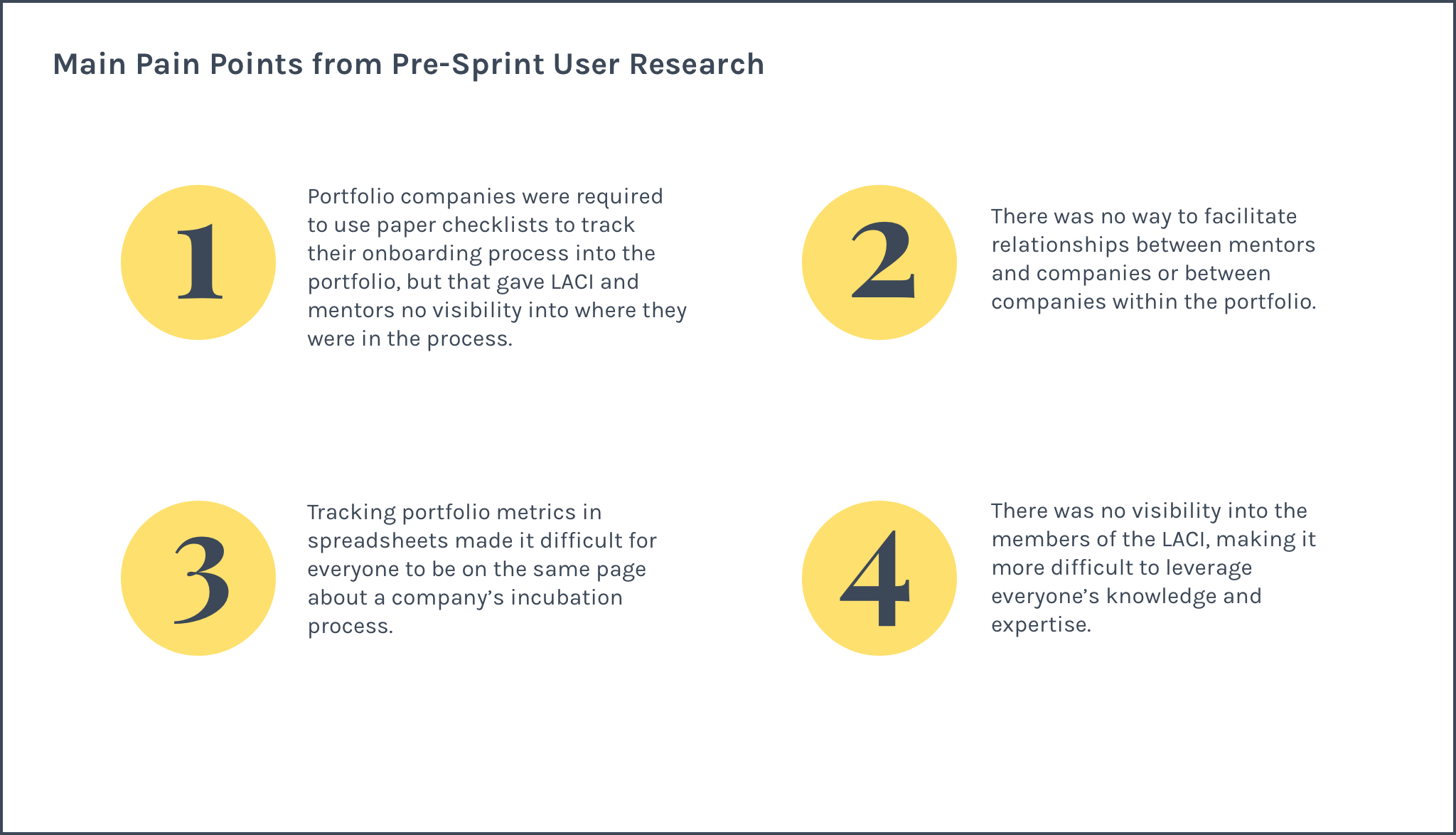
With all this knowledge and research, we conducted a design sprint which also included several representative stakeholders from the various user groups. The sprint helped us further hone in on and prioritze what issues had to be addressed first. We also used this opportunity to start sketching and wireframing different portions of the product for the initial phase.
The design ideas that came out of the sprint focused on creating a directory of people in the system, as well as a way to track metrics and the startup incubation process.

I designed a set of UI designs for concept testing, as well as a user testing guide. We held remote concept testing sessions with people from each user group.
All groups of users felt the company and people directory sections were extremely useful. Interestingly we learned that one of the biggest pain points from all the user groups was a lack of a straightforward communication between companies, mentors and LACI staff. Existing tools like email would bury information within users’ inboxes. There was also no straightforward way to ask the entire community for help with a particular issue.

Next we made recommendations to the product roadmap regarding features that needed to be further explored across a year timeframe. This roadmap allowed for further conversation with LACI about what their business goals were, which we took into consideration as we were evolving the roadmap.
It was clear from the concept testing phase that users wanted not only a way to find out who was in the system, they also wanted the platform to facilitate connections and community-building. While the metrics and portfolio management sections were initially thought to be first priority for the first phase, LACI wanted us to focus on designing and building both the directory and exploring features that would allow LACI members to connect and communicate with each other on the platform.
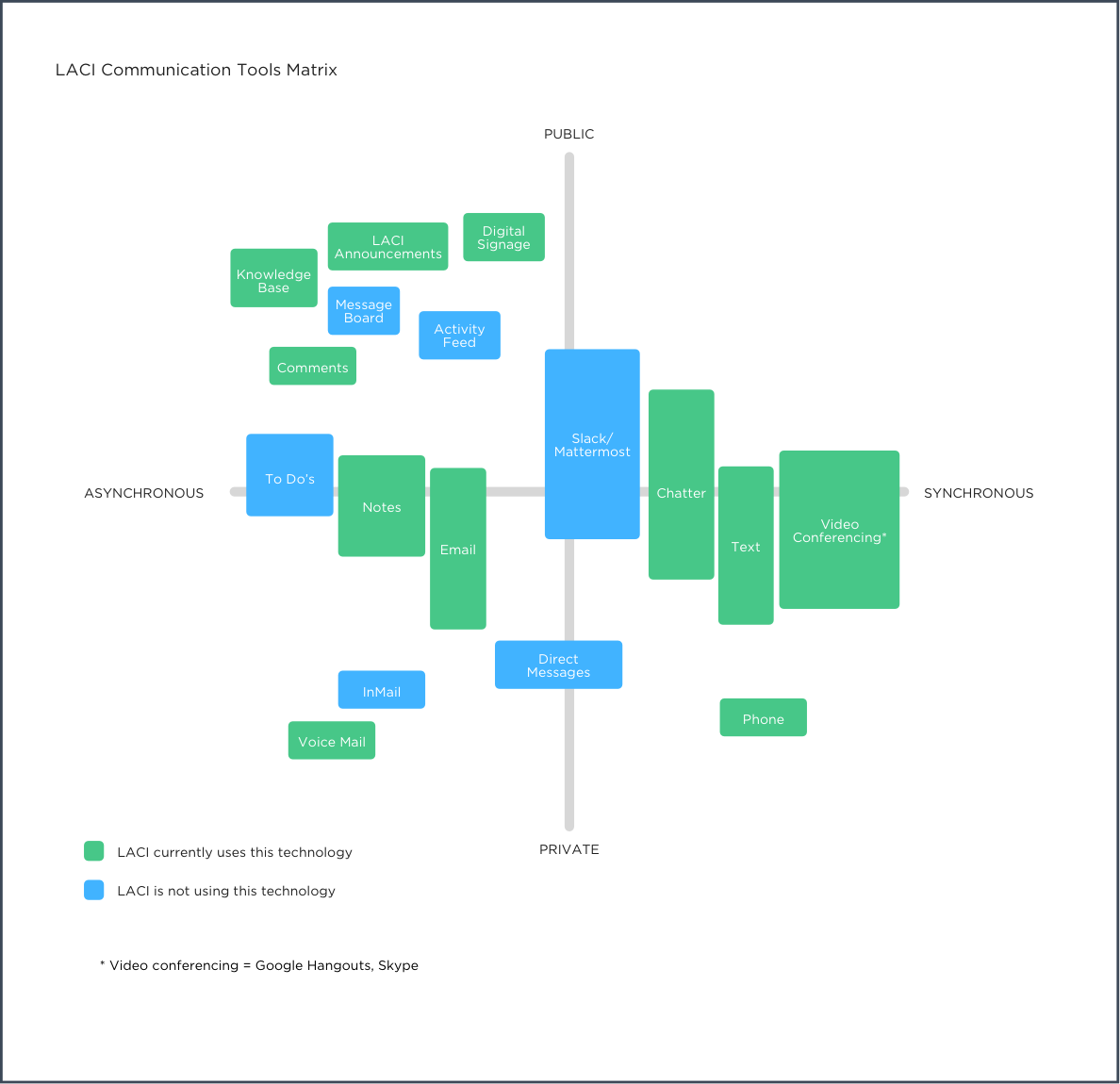
We iterated on these design concepts and ran another set of user interviews with various stakeholders, with the focus being on the directory and a communication tool. LACI did not want a message board, but something that was more dynamic. Users also expressed that they wanted to have a way to make posts under specific topics. We further iterated on these ideas over several weeks and evolved these in weekly meetings with LACI. We landed on a newsfeed-like design that would allow users to post in various categories.
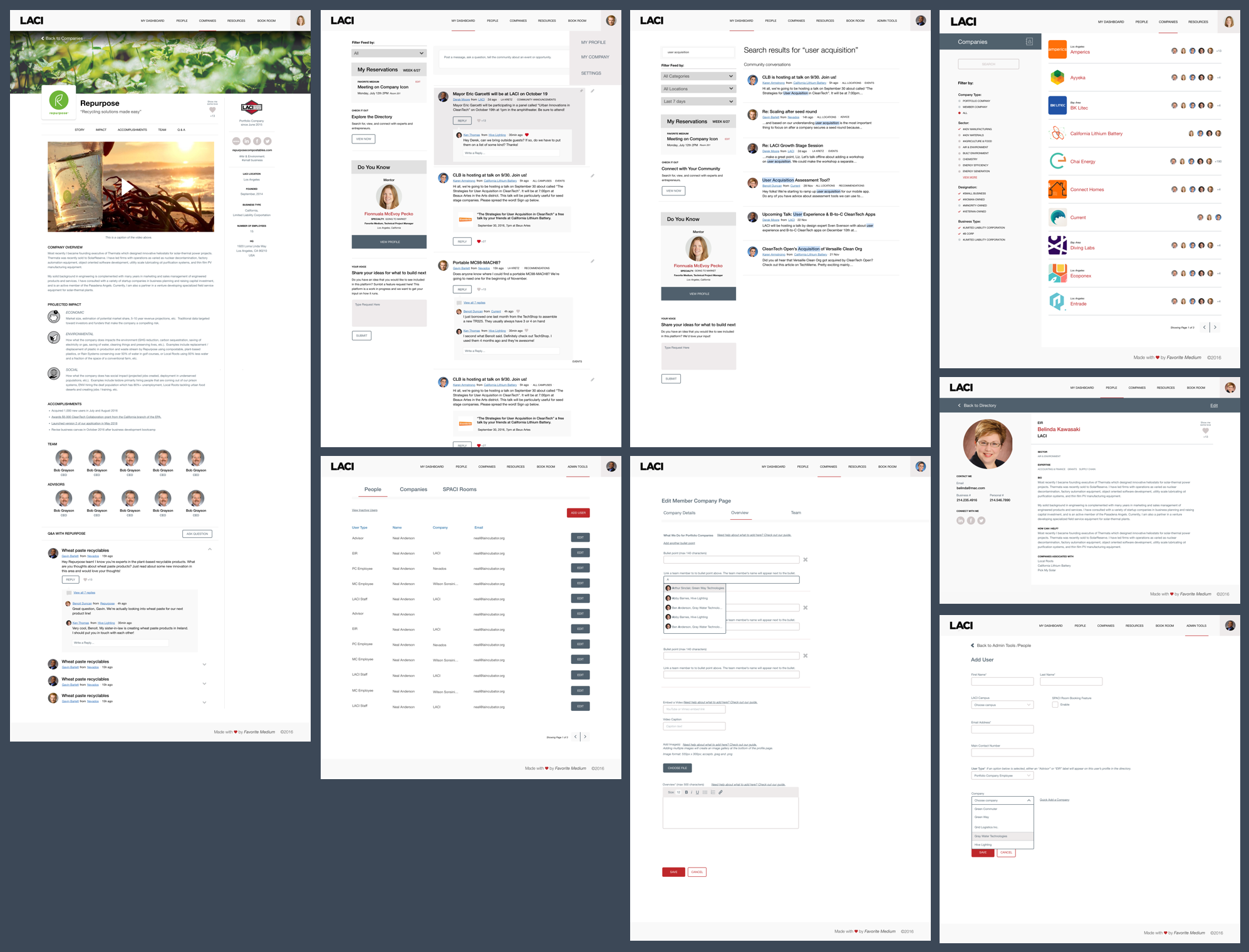
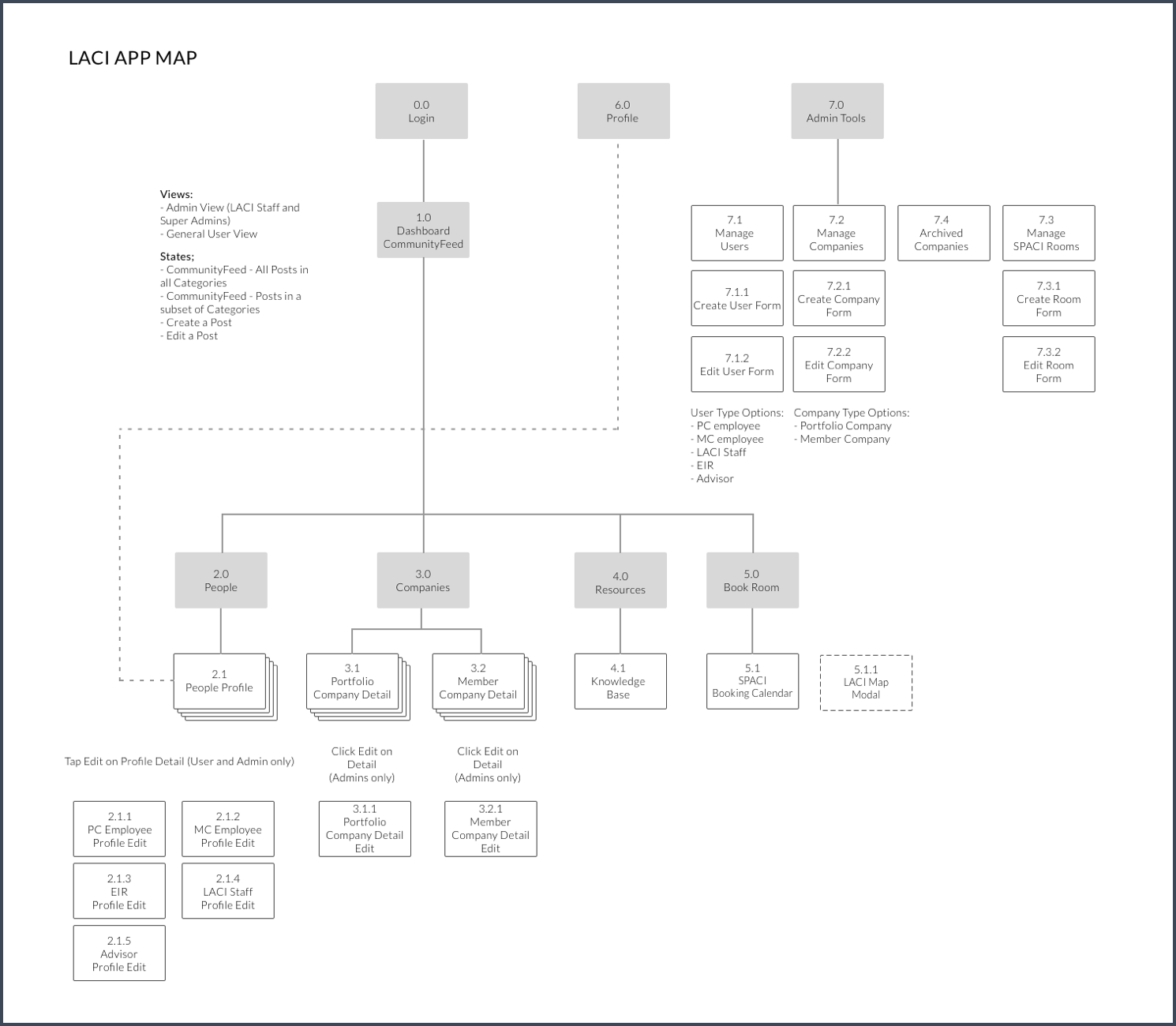
Throughout this process, we worked closely with my development colleagues to determine if certain features and interactions were possible. In some cases, we asked our developers to help us do technical research to test our design assumptions and determine the best way to develop different interactions. I also worked closely with my visual design colleague who designed the look-and-feel for the product, as well as a visual design system that could be applied to current and future iterations of the product.
Once designs were approved by stakeholders, I annotated them with developer notes outlining user flows, detailing various components of functionality. This product is fairly complex in that there are different user types that had different access levels. To ease communication, I created a spreadsheet with the various user roles to make clear what the functionality would be for each. I also wrote tickets for various sections and features and assigned them to different agile sprints based on a schedule created by our technical project manager.
Throughout the build process I also continued to test different components of the build and write bug tickets for our developers, in some cases recording video of the bugs to better articulate any issues.
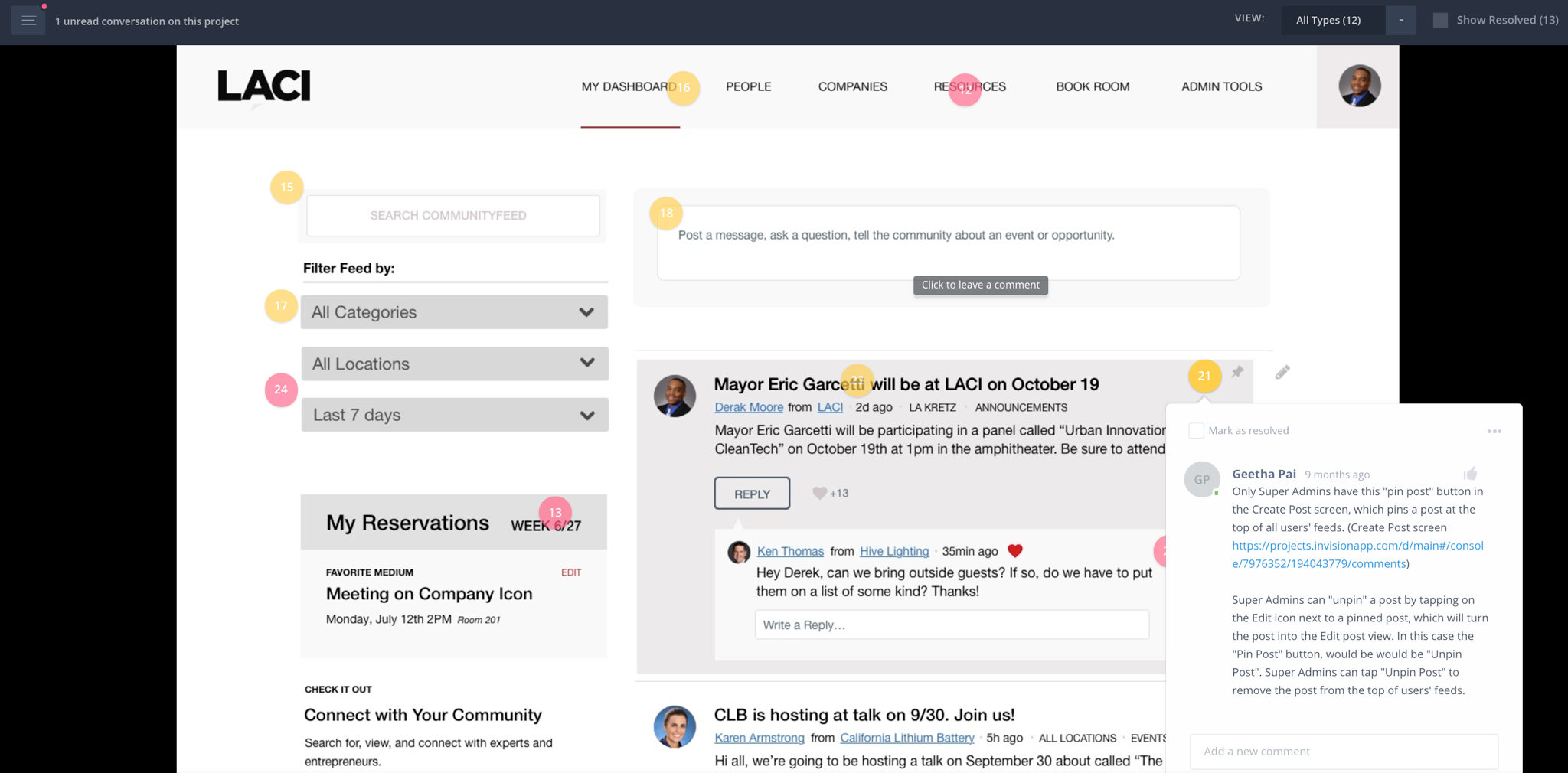
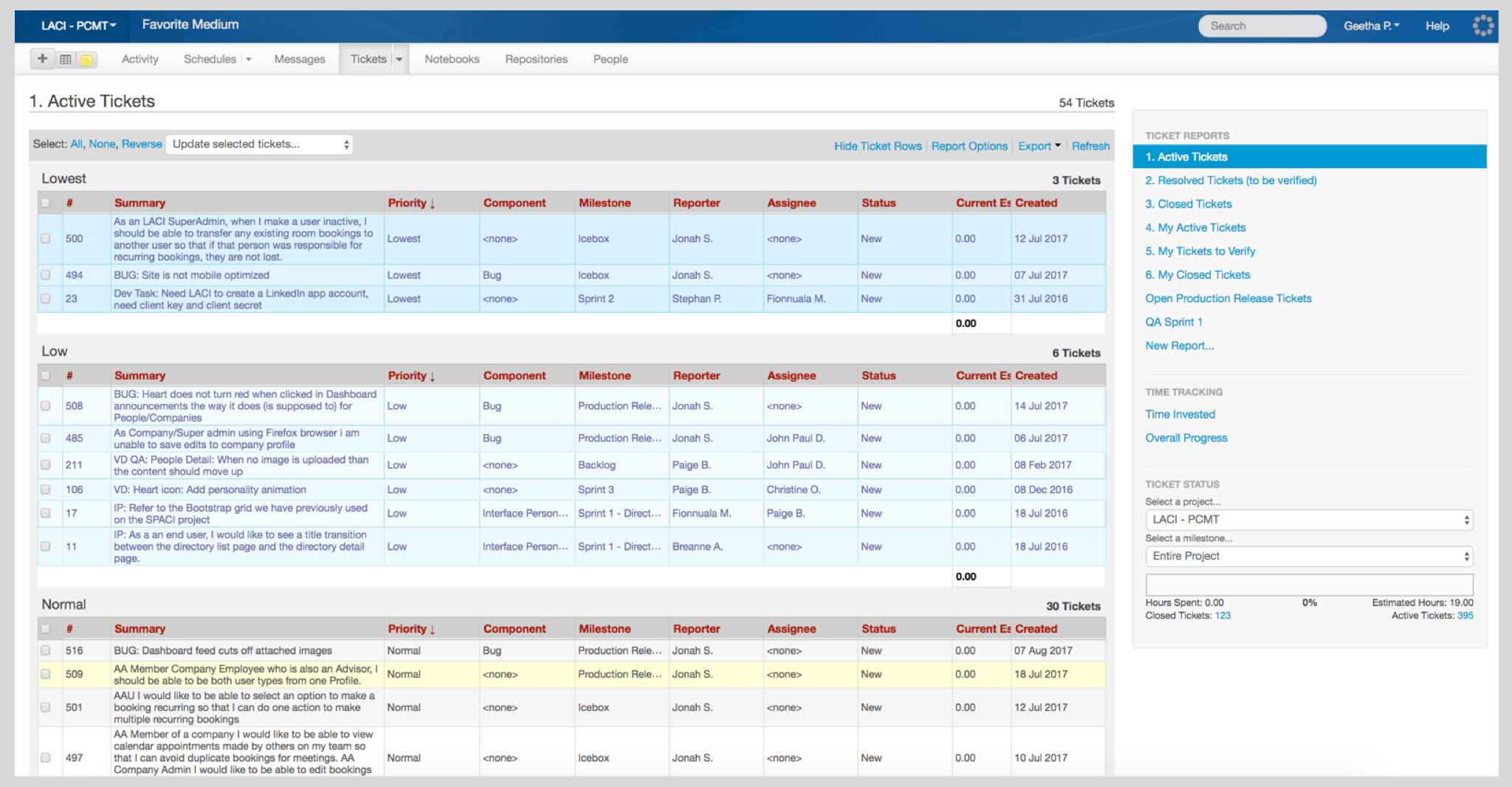
The first phase of the product shipped and is being used by all members of the LACI community. They’re finding the tool useful and helpful in their day-to-day.The next phase will further explore administrative management tools.